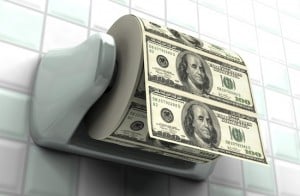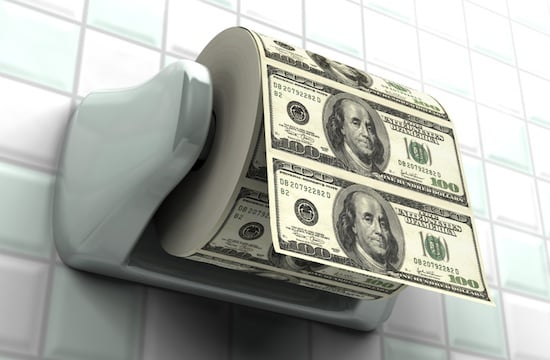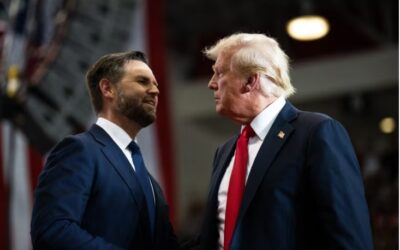This article was originally published by Alex J. Pollock at The Mises Institute.

With inflation running at over 6 percent and interest rates on savings near zero, the Federal Reserve is delivering a negative 6 percent real (inflation-adjusted) return on trillions of dollars in savings. This is effectively expropriating American savers’ nest eggs at the rate of 6 percent a year. It is not only a problem in 2021, however, but an ongoing monetary policy problem of long-standing. The Fed has been delivering negative real returns on savings for more than a decade. It should be discussing with the legislature what it thinks about this outcome and its impacts on savers.
The effects of central bank monetary actions pervade society and transfer wealth among various groups of people—a political action. Monetary policies can cause consumer price inflations like we now have, and asset price inflations, like those we have in equities, bonds, houses, and cryptocurrencies. They can feed bubbles, which turn into busts. They can by negative real yields push savers into equities, junk bonds, houses, and cryptocurrencies, temporarily inflating prices further while substantially increasing risk. They can take money away from conservative savers to subsidize leveraged speculators, thus encouraging speculation. They can transfer wealth from the people to the government by the inflation tax. They can punish thrift, prudence, and self-reliance.
Savings are essential to long-term economic progress and to personal and family financial well-being and responsibility. However, the Federal Reserve’s policies, and those of the government in general, have subsidized and emphasized the expansion of debt, and unfortunately appear to have forgotten savings. The original theorists of the savings and loan movement, to their credit, were clear that first, you had “savings,” to make possible the “loans.” Our current unbalanced policy could be described, instead of “savings and loans,” as “loans and loans.”
As one immediate step, Congress should require the Federal Reserve to provide a formal savers impact analysis as a regular part of its Humphrey-Hawkins reports on monetary policy and targets. This savers impact analysis should quantify, discuss, and project for the future the effects of the Fed’s policies on savings and savers, so that these effects can be explicitly and fairly considered along with the other relevant factors. The critical questions include: What impact is Fed monetary policy having on savers? Who is affected? How will the Fed’s plans for monetary policy affect savings and savers going forward?
Consumer price inflation year over year as of October 2021 is running, as we are painfully aware, at 6.2 percent. For the ten months of 2021 year-to-date, the pace is even worse than that—an annualized inflation rate of 7.5 percent.
Facing that inflation, what yields are savers of all kinds, but notably including retired people and savers of modest means, getting on their savings? Basically nothing. According to the Federal Deposit Insurance Corporation’s October 18, 2021, national interest rate report, the national average interest rate on a savings account was a trivial 0.06 percent. On money market deposit accounts, it was 0.08 percent; on three-month certificates of deposit, 0.06 percent; on six-month CDs, 0.09 percent; on six-month Treasury bills, 0.05 percent; and if you committed your money out to five years, a majestic CD rate of 0.27 percent.
I estimate, as shown in the table below, that monetary policy since 2008 has cost American savers about $4 trillion. The table assumes savers can invest in six-month Treasury bills, then subtracts from their average interest rate the matching inflation rate, giving the real interest rate to the savers. This is on average quite negative for these years. I calculate the amount of savings effectively expropriated by negative real rates. Then I compare the actual real interest rates to an estimate of the normal real interest rate for each year, based on the fifty-year average of real rates from 1958 to 2007. This gives us the gap the Federal Reserve has created between the actual real rates over the years since 2008 and what would have been historically normal rates. This gap is multiplied by household savings, which shows us by arithmetic the total gap in dollars.
To repeat the answer: a $4 trillion hit to savers.
The Federal Reserve through a regular savers impact analysis should be having substantive discussions with Congress about how its monetary policy is affecting savings, what the resulting real returns to savers are, who the resulting winners and losers are, what the alternatives are, and how its plans will impact savers going forward.
After thirteen years with on average negative real returns to conservative savings, it is time to require the Federal Reserve to address its impact on savers.












Savings, in terms of money in the bank, have been a losing proposition since the Clinton administration.
This has been deliberately intended and is why the stock market and such have done well and making it soar beyond anything that common sense based on PE or other real value would dictate.
Interestingly, precious metals have been mediocre, with money that would be expected to go there by savers going to such things as real estate instead.
Is this good or bad?
You decide, the only thing at stake if you miscall it is your future so it isn’t a big deal if you’re wrong.
Money is the root of all evil.
Now run along and go get your free shot.
Paid for by your masters.
Love of money is the root of all evil, not the money itself.
It all comes down to greed, a sin in itself.
Investing in liquidable assets that gain during the inflation years is the only way to NOT lose your savings, and it doesn’t have to be long term but just a few years or a few months.
In 2011 there was a poster on this blog who went by the moniker of Eisenkreuz. He constantly pushed bitcoin. At the time, bitcoin was less than a dollar. If you had put $100 into bitcoin back then, you would have over 5 million dollars today. But no, precious was the thing to buy because…5000 years of history, holds it’s value, etc. etc.
How’d that precious do compared to bitcoin these last 10 years?
In 2011 there was a poster on this blog who went by the moniker of Eisenkreuz. He constantly pushed bitcoin. At the time, bitcoin was less than a dollar. If you had put $100 into bitcoin back then, you would have over 5 million dollars today. But no, precious was the thing to buy because…5000 years of history, holds it’s value, etc. etc.
How’d that precious do compared to bitcoin these last 10 years?
Those of us who have not been successfully propagandized can easily see no matter what the issue, and no matter how seemingly unrelated the issues, the focus of the State always involves one of the following; the disempowerment of the people by curtailing our rights, effecting a dramatic decrease in the standard of living and quality of life for citizens, to lower the average IQ and elimination of critical thinking, shorter lifespans for citizens and fewer children – especially white, to bring about the political, social, and numerical marginalizing of those of European heritage, the marginalizing of Christianity, to make the State and its gov’t and officialdom unassailable, and to make citizens nothing more than a managed disposable resource. Almost everything the State does involves these goals directly or indirectly.
Anyone who keeps their savings in a bank are the stupidest morons there is. READ the fine print! They can take your money as a bailout and you can’t do shit about it! Besides it is subject to siezure by a whole host of predators! Make sure you pay taxes on your crappy tiny interest too. How can anyone be such an idiot. What’s the old saying? A fool and his money are soon parted. I have a poem I wrote about this lol, here ya go…
Patriot Bob had an IRA
I’ll have enough to retire he’d say
With deffered taxes and all the rest
No one can touch my safety nest
He’d file his paperwork every year
Confident that he had no fear
Then one day it all went down
The economy crashed into the ground
The Govt. froze all assets
To cover all the banks bad bets
A paper trail led straight to Bob
Made it easy for them to rob
With nothing left he went to his shelf
Grabbed his gun and shot himself…